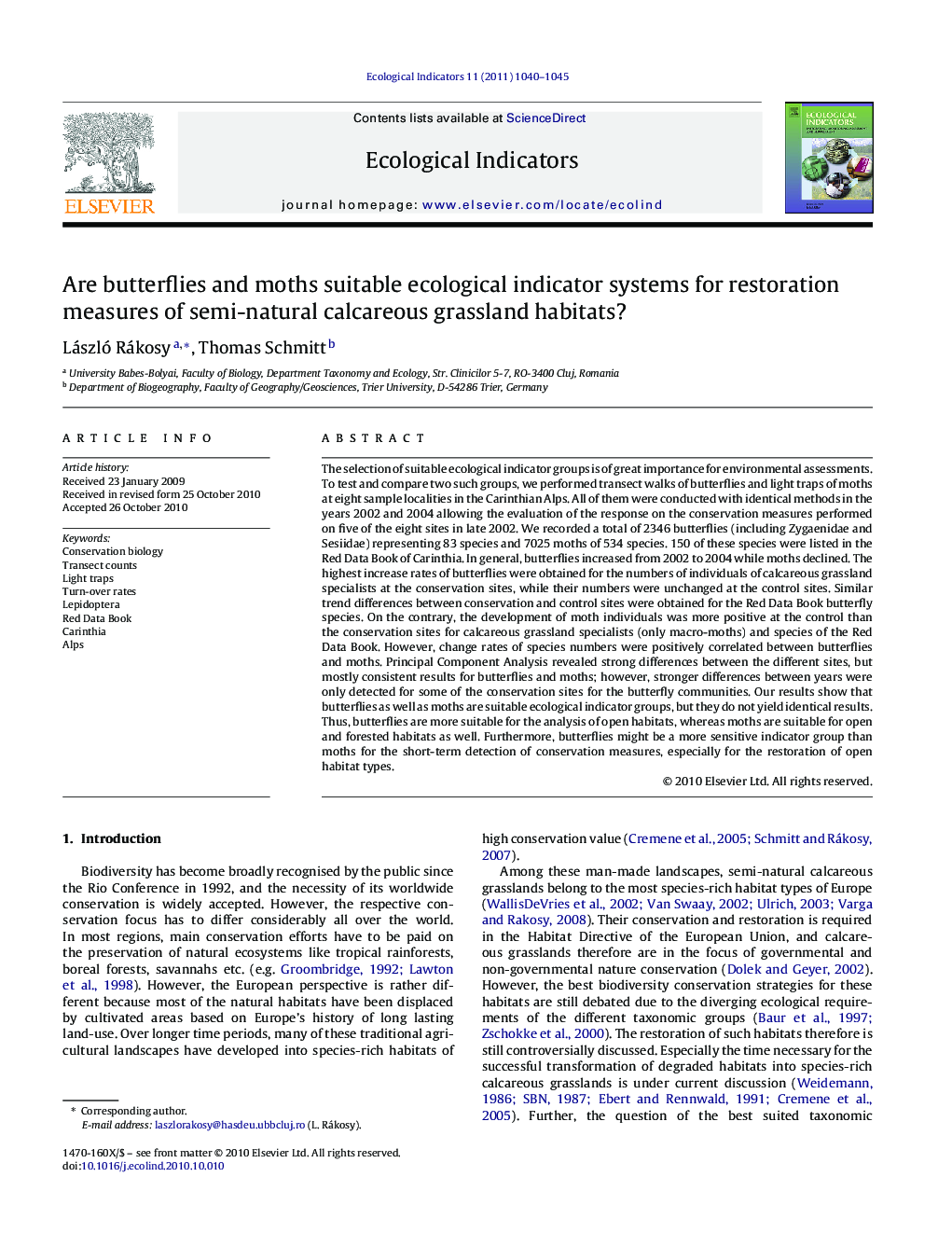| کد مقاله | کد نشریه | سال انتشار | مقاله انگلیسی | نسخه تمام متن |
|---|---|---|---|---|
| 4374038 | 1303161 | 2011 | 6 صفحه PDF | دانلود رایگان |

The selection of suitable ecological indicator groups is of great importance for environmental assessments. To test and compare two such groups, we performed transect walks of butterflies and light traps of moths at eight sample localities in the Carinthian Alps. All of them were conducted with identical methods in the years 2002 and 2004 allowing the evaluation of the response on the conservation measures performed on five of the eight sites in late 2002. We recorded a total of 2346 butterflies (including Zygaenidae and Sesiidae) representing 83 species and 7025 moths of 534 species. 150 of these species were listed in the Red Data Book of Carinthia. In general, butterflies increased from 2002 to 2004 while moths declined. The highest increase rates of butterflies were obtained for the numbers of individuals of calcareous grassland specialists at the conservation sites, while their numbers were unchanged at the control sites. Similar trend differences between conservation and control sites were obtained for the Red Data Book butterfly species. On the contrary, the development of moth individuals was more positive at the control than the conservation sites for calcareous grassland specialists (only macro-moths) and species of the Red Data Book. However, change rates of species numbers were positively correlated between butterflies and moths. Principal Component Analysis revealed strong differences between the different sites, but mostly consistent results for butterflies and moths; however, stronger differences between years were only detected for some of the conservation sites for the butterfly communities. Our results show that butterflies as well as moths are suitable ecological indicator groups, but they do not yield identical results. Thus, butterflies are more suitable for the analysis of open habitats, whereas moths are suitable for open and forested habitats as well. Furthermore, butterflies might be a more sensitive indicator group than moths for the short-term detection of conservation measures, especially for the restoration of open habitat types.
Journal: Ecological Indicators - Volume 11, Issue 5, September 2011, Pages 1040–1045